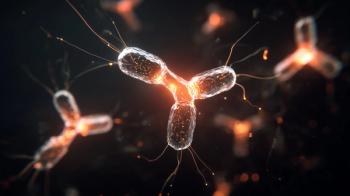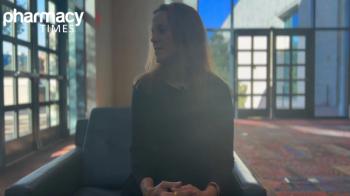
New Classification Standards Will Highlight National Rosacea Month
In 2018, the National Rosacea Society's focus will be around new classification standards.
Each April, the National Rosacea Society (NRS) celebrates Rosacea Awareness Month in an effort to increase public awarenss of a condition that affects approximately 16 million people in the United States. Throughout April, the NRS hosts a variety of activities with a goal of educating patients who are experiencing the symptoms of the condition, but not yet diagnosed with Rosacea, to seek evaluation and effective management.
Rosacea is most commonly seen in fair skined individuals, but has been diagnosed in patients of all ethnicities and backgrounds. Women experience symptoms more often than men and symptoms usually appear after the age of 30.
In 2018, the NRS focus will be around new classification standards recently published, the first update to these standards since 2002 and only the second set of classfication standards ever released by the Society. The 2002 classifications focused on common morphologic groupings into subtypes, while the 2017 version emphasizes individual phenotypes based on observable characterisits resulting from environmental of genetic factors. In order to be diagnosed with rosacea, patients should have either fixederythema in the facial center that has a characteristic pattern or phymatous changes such as skin thickening, fibrosis, patulous follicles, rhinophyma (a large red bulbous nose), or glandular hyperplasia. Centrofacial redness intensity may be consistent or may periodically increase and is the most common sign of rosacea.
It is important to rule out other causes of these symptoms, including drug-induced causes such as corticosteroid-induced rosacea or drugs causing lupus erythematosus, before the diagnosis of rosacea is made. These cutanous signs usually appear with at least one diagnositic feature, but the presence of two or more major phenotypes can also be considered diagostic for the condition.
Major phenotypes, or features, listed in the new standard include:
- Paupules and pustules primarily in the centrofacial area. These should be distinguished from comedones which should be credited to an acne process rather than rosacea. Patients may also experience nodules
- Flushing that is frequent and usually prolonged. Erythema from flushing may be less visually apparent in patients with darker skin tones, but these patients may report subjectively expericing this symptom
- Telangiectasia which are widened venules that redlines or patterns on the skin, often in clusters.
- Occular manifestations, especially lid margin telangiectasis, scleritis, sclerokeratitis, spade-shaped infiltrates in the cornea, or redness on the conjunctiva between the eyelids.
The 2017 standards also list multiple secondary phenotypes that may occur in patients. These signs and symptoms may include:
- Burning or stinging, usually on erythematous skin with or without scales.
- Facial edema that accompanies of follows extended erythema or flusing due to post-capillar extravasation during inflamation and may persist for several days.
- Dryness of central facial skin that appears rough and scaly.
- Occular manifestations that are not exclusive to rosacea, such as burning, stinging, photosensitivity, foreign object sensation, conjunctivitis, or 'honey crust' and cylindrical collarette accumulation at the eyelash bases.
Diagnosis and subsequent treatment can have a tremendouns impact on patients' quality of life. Untreated or undertreated rosacea has been linked to depression and anxiety. Trigger avoidance, laser therapy, or topical or oral medications directed at symptoms (i.e. clonidine for flushing, antiinflammatories, or artificial tears for occular symptoms ) are all potential treatment options, depending on the severity of the rosacea. Pharmacists who suspect that a patient may be suffering from rosacea should refer them to the primary care physician for evaluation.
References
- Rosacea Awareness Month. National Rosacea Society. www.rosacea.org/patients/ram. Accessed February 16, 2018.
- Gallo RL, Granstein RD, Kang S, et al. Standard classification and pathophysiology of rosacea: The 2017 update by the National Rosacea Society Expert Committee. J Am Acad Dermatol 2018;78:148-55
- Rosacea Awareness Month to Highlight New Standard Classification and Pathophysiology of This Widely Misunderstood Disorder [news release]. Barrington, IL. National Rosacea Society. February 1, 2018. www.rosacea.org/press/rosacea-awareness-month-highlight-new-standard-classification-and-pathophysiology-widely. Accessed February 16, 2018.
- Rosacea Treatment Algorithms. National Rosacea Society. www.rosacea.org/physicians/treatmentalgorithms. Accessed February 16, 2018.
Newsletter
Stay informed on drug updates, treatment guidelines, and pharmacy practice trends—subscribe to Pharmacy Times for weekly clinical insights.


















































































































































































































